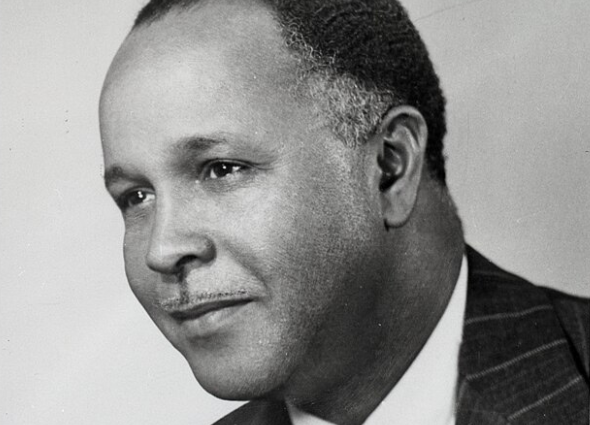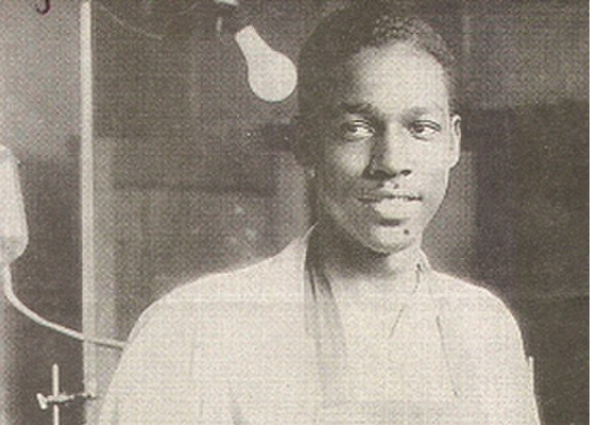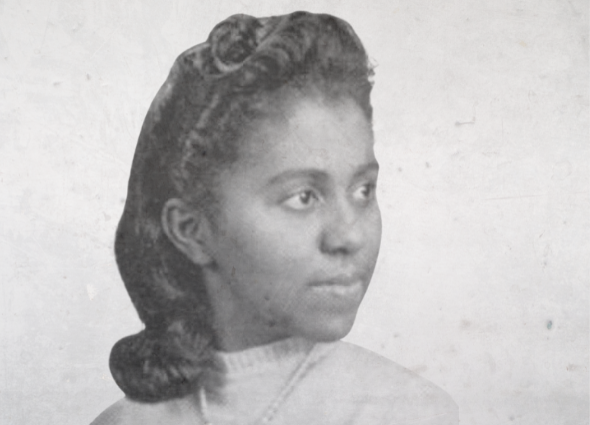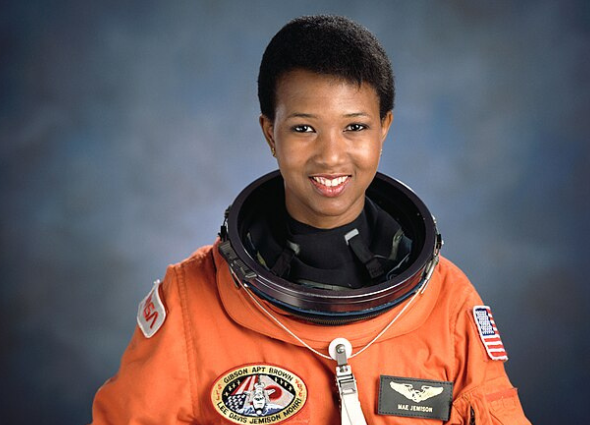Five Black Scientists to Celebrate During Black History Month
Celebrating Black History Month is not just for Social Studies. Many Black scientists have contributed to our knowledge of biology, chemistry, and physics. Thanks to their legacy of hard work and perseverance, students today know they can overcome socio-economic challenges and accomplish their dreams.
As your school celebrates African Americans who made history, encourage science teachers to incorporate some of these famous Black scientists in their curriculum. Their stories can inspire students to pursue academic achievements that they otherwise would not have thought possible.
George Washington Carver

Agricultural Scientist
George Washington Carver went from being enslaved to becoming a world-renowned scientist and inventor. His agricultural research improved the lives of Southern farmers, including other African Americans.
Carver was born in the summer of 1864 on a farm near Diamond, Missouri. When Carver was only a few months old, slave raiders kidnapped him and his mother and sister. Their owner, Moses Carver, hired a neighbor to rescue them. Tragically, the neighbor only found George.
Moses and his wife Susan raised George and his brother, James, teaching them how to read and write. James soon quit his studies to help with farm work. But George was too frail for outside work, according the State Historical Society of Missouri, so he learned how to wash and mend clothes and tend the family garden. This task sparked George Carver’s interest in plants, which would later lead him to pioneer new agricultural techniques.
During his teens, Carver moved from town to town, putting himself through school using his domestic skills to make money. He finally graduated from Minneapolis High School in 1880.
Although he was accepted into Highland College in Kansas, their administration rejected him once they found out he was Black. Despite this setback, Carver continued to pursue higher education and graduated in 1894 with a botany science degree from Iowa State Agricultural College — the first African American to do so. He went on to earn a master’s in 1896.
Early Life
Carver was born in the summer of 1864 on a farm near Diamond, Missouri. When Carver was only a few months old, slave raiders kidnapped him and his mother and sister. Their owner, Moses Carver, hired a neighbor to rescue them. Tragically, the neighbor only found George.
Moses and his wife Susan raised George and his brother, James, teaching them how to read and write. James soon quit his studies to help with farm work. But George was too frail for outside work, according the State Historical Society of Missouri, so he learned how to wash and mend clothes and tend the family garden. This task sparked George Carver’s interest in plants, which would later lead him to pioneer new agricultural techniques.
During his teens, Carver moved from town to town, putting himself through school using his domestic skills to make money. He finally graduated from Minneapolis High School in 1880.
Although he was accepted into Highland College in Kansas, their administration rejected him once they found out he was Black. Despite this setback, Carver continued to pursue higher education and graduated in 1894 with a botany science degree from Iowa State Agricultural College — the first African American to do so. He went on to earn a master’s in 1896.
Career
At Tuskegee Institute, Carver devoted his research to improving the lives of Southern farmers, many of whom were formerly enslaved. His achievements earned the admiration of U.S. Presidents and even foreign leaders. In 1916, he became a member of the Britain’s Society for the Encouragement of Arts, Manufactures, and Commerce.
Soon after Carver died on January 5, 1943, at the age of 78, Franklin D Roosevelt signed legislation for a monument to be built in Diamond, Missouri in Carver’s honor. Carver is the African American scientist to have a national monument dedicated to him.
Percy Julian

Research Chemist
Born in Montgomery Alabama on April 11, 1899, Percy Julian was not allowed to attend any of the high schools in his area. But that did not stop him from pursuing higher education and ultimately earning a doctoral degree in chemistry.
Julian enrolled in DePauw University in Greencastle, Indiana where he also took high-school level classes in the evening to catch up to his peers. He graduated first in his class with Phi Beta Kappa honors.
After teaching chemistry at Fisk University, he got a scholarship and graduated from Harvard University with a master’s degree. He was not allowed to earn a doctorate at Harvard because of his race, according to Black History in America, so he taught at various Black colleges before finally getting his Ph.D. at the University of Vienna, in Austria, in 1931.
Becoming a Renowned Chemist
With his doctoral degree in hand, he returned to DePauw University to continue researching. In 1935, he received acclaim for inventing a drug treatment for glaucoma: a group of conditions that causes blindness.
Despite his success, the DePauw University administration refused to make him a full-time professor on account of his race. Tired of the discrimination, Julian looked for employment elsewhere. After multiple rejections, he got a job as a lab director at Glidden Company.
For 18 years, Julian’s soybean research produced many valuable products. One of them was Aero-Foam, which used soy protein to snuff out gasoline fires. The Allies used this foam during World War II.
He also pioneered the chemical synthesis of other medical drugs including steroids, birth control, and cortisone, which treats rheumatoid arthritis.
In 1954, he started his own company — Julian Laboratories — and sold it seven years later for over $2 million, becoming one of the first Black millionaires, according to the American Chemical Society. He then founded a nonprofit organization called Julian Research Institute, which he ran until he died on April 19, 1975.
He became a part of the National Inventors Hall of Fame in 1990. Nine years later, the American Chemical Society declared Julian’s glaucoma treatment as “one of the top 25 achievements in the history of American chemistry.”
Vivien Thomas

Cardiac Surgeon
Vivien Thomas’ plans to attend college and become a physician took a drastic turn when he lost money in the stock market crash that spurred the Great Depression. Determined to work in the medical field, he took a job as a surgical research assistant for Dr. Alfred Blalock at Vanderbilt University.
Under Blalock’s tutelage, Thomas quickly mastered surgical techniques and research practices. By the mid-1930s, he was doing the work of a postdoctoral researcher, though he was only paid a janitor’s salary, according to Vanderbilt School of Medicine.
At Blalock’s request, Thomas moved to Baltimore and worked with Blalock at John Hopkins University. During that time, the university did not admit African Americans faculty or students. Thomas’ salary was much less than his white colleagues, and he often had to work as a bartender to make extra income, according to Johns Hopkins Library.
Blue Baby Operations
Thomas’ career changed forever when Blalock asked him to re-create the abnormal heart condition of Tetralogy of Fallot (also known as Blue Baby syndrome) in dogs. The purpose was to discover a surgical procedure that would cure children with this heart defect. In less than two years, Thomas came up with a procedure safe enough to do on a human patient.
Because Thomas did not have a medical degree, the school did not allow him to do the operation. Instead, he stood on a stool behind Blalock and walked him through the surgery step by step, according to Johns Hopkins Library.
After several successful blue baby operations, Thomas’ colleagues began to appreciate his work, though they never mentioned him in any publications. It was only after 25 years that Thomas received credit for his role, according to Johns Hopkins School of Medicine.
Thomas became an official faculty member at John Hopkins University in 1976 when the school presented him with an honorary doctorate. After Thomas died in 1985 of pancreatic cancer, the school hung a portrait of him in John Hopkins Hospital across from the portrait of Alfred Blalock.
PBS aired a documentary based on Thomas’ life in 2002, called, Partners of the Heart. In 2004, HBO released a TV film about Thomas and Blalock’s work, titled, Something the Lord Made.
Marie M. Daly

Biochemist
Inspired by her father’s love for science, Marie M. Daly studied chemistry at Queens College in Flushing, New York. After graduating magna cum laude in 1942, the college offered her a fellowship to pursue a master’s degree in chemistry at New York University, according to Science History Institute. She completed her master’s program in just one year while also working part-time as a lab assistant.
After tutoring chemistry students at Queens College, she enrolled in a doctorate program at Columbia University. In 1947 (only three years after entering the program), she became the first Black woman to obtain a Ph.D. in chemistry.
Daly discovered the connection between cholesterol and high blood pressure, according to Wei Li’s November 2020 article for Harvard University. Using lab rats, she found that those with more cholesterol in their blood tended to have higher blood pressure and clogged arteries. Her research led to future discoveries on the causes of atherosclerosis.
Daly’s impact on the world did not end with her research. She also made it her mission to help minority students get into medical school and graduate science programs. In 1988, she started a scholarship fund for Black science students at Queens College. She dedicated the scholarship to her father, who was unable to complete his college degree due to financial hardship.
Mae C. Jemison

Astronaut
Mae Jemison was the first Black woman admitted into the NASA astronaut program and on September 12, 1992, became the first African American woman in space.
Education was important to Jemison’s parents, and thanks to their encouragement, Jemison excelled in academics.
After graduating with honors from Morgan Park High School, Jemison attended Stanford University on a National Achievement Scholarship. She earned a chemical engineering degree and went on to study medicine at Cornell University.
Although she had a successful medical career, Jemison dreamed of becoming an astronaut. In 1985, she applied for the NASA astronaut program. The tragic Challenger explosion of January 1986 delayed admission for a year, but when Jemison applied again the next year, she was one of the 15 candidates selected out of the 2,000 applicants.
When Jemison finally went to space aboard the Endeavor in 1992, she did experiments on weightlessness and motion sickness, which helped improve future space travel.
Jemison received many recognitions for her accomplishments in space science, including Gamma Sigma Gamma Woman of the Year in 1990. Two years later, an alternative public school in Detroit was named after her.
Celebrate Black History Month in Science
Mae Jemison was the first Black woman admitted into the NASA astronaut program and on September 12, 1992, became the first African American woman in space.
Education was important to Jemison’s parents, and thanks to their encouragement, Jemison excelled in academics.
After graduating with honors from Morgan Park High School, Jemison attended Stanford University on a National Achievement Scholarship. She earned a chemical engineering degree and went on to study medicine at Cornell University.
These are just a few of the many Black scientists worth honoring. As your teachers share more about these remarkable individuals during Black History Month, they will inspire the next generation of scientists to pursue their dreams.
